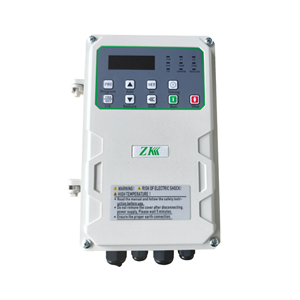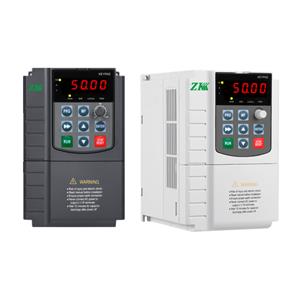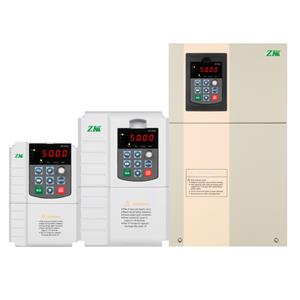The Critical Role of Variable Frequency Inverters in Fan Systems
In the realm of industrial operations,efficient airflow management is vital for safety,productivity, and energy conservation.At the heart of this balance lies the variable frequency inverter (VFI),a technology transforming how industries control their ventilation and cooling systems.By enabling precise speed regulation of industrial fans,VFIs are driving unprecedented energy savings, operational flexibility,and equipment longevity.
Energy Efficiency:Cutting Costs and Carbon Footprints
Industrial fans account for up to 30% of energy consumption in manufacturing facilities.Traditional fixed-speed fans operate at maximum capacity regardless of actual demand,leading to massive energy waste.Variable frequency inverters solve this by dynamically adjusting fan motor speed to match real-time airflow requirements.For instance,a chemical plant in Texas reduced its annual energy bills by $240,000 after retrofitting 50 fans with VFIs,achieving a 40% reduction in power usage.Such savings align with global net-zero goals,as industries strive to halve emissions by 2030.
Precision Control for Enhanced Performance
Variable frequency inverters empower industries to optimize airflow with surgical precision:
Demand-Based Ventilation:In warehouses,VFIs adjust fan speeds based on occupancy sensors or CO₂ levels, ensuring air quality without over-ventilation.
Process Cooling:Steel mills use VFIs to modulate cooling fans during temperature-sensitive production stages, improving product consistency.
Pressure Management:HVAC systems in cleanrooms maintain stable air pressure gradients by linking VFIs with differential pressure sensors.
Extending Equipment Life and Reducing Downtime
Fixed-speed fans endure constant mechanical stress from abrupt starts and stops, eading to frequent motor failures. Variable frequency inverters eliminate this issue through:
Soft Start/Stop:Gradual acceleration reduces bearing wear,extending motor lifespan by up to 50%.
Load Adaptability:Avoiding prolonged operation at resonant frequencies minimizes vibration damage.
A case study at a German automotive paint shop showed a 60% drop in fan motor replacements after VFI installation.
Smart Integration and Industry 4.0 Readiness
Modern variable frequency inverters are IoT-enabled devices that unlock advanced functionalities:
Predictive Maintenance:Embedded sensors monitor motor temperature and vibration,alerting teams to issues before failures occur.ABB’s Ability™ platform uses this data to cut unplanned downtime by 70%.
Cloud-Based Optimization:AI algorithms analyze historical airflow patterns to auto-adjust fan speeds,as seen in Amazon’s smart warehouses.
Energy Recovery:Regenerative VFIs in data centers convert excess kinetic energy into reusable electricity,improving overall system efficiency.
Sector-Specific Success Stories
Mining Ventilation:
Underground mines in Chile use explosion-proof VFIs to regulate airflow based on real-time gas concentrations, enhancing worker safety while reducing energy use by 35%.Agriculture:
Dutch greenhouse complexes employ VFIs in circulation fans to maintain optimal humidity, boosting crop yields by 20% with 30% less energy.Power Generation:
Gas turbine cooling fans equipped with VFIs at a UAE power plant adapt to ambient temperature shifts,improving turbine efficiency by 15%.
Overcoming Implementation Challenges
While VFIs offer immense benefits, adoption hurdles include:
Harmonic Distortion:Advanced VFIs with built-in filters mitigate electrical interference,ensuring compliance with IEEE 519 standards.
Retrofit Costs:Government incentives,like Canada’s Industrial Energy Management Program,offset up to 50% of VFI upgrade expenses.
Technical Training:Manufacturers like Siemens offer augmented reality (AR) tools to simplify VFI programming for technicians.
Market Growth and Future Trends
The global variable frequency inverter market for fan applications is projected to grow at 7.1% CAGR,reaching $5.8 billion by 2027.Emerging innovations include:
Hybrid Solar-VFI Systems:Off-grid factories in Africa pair solar panels with VFIs to power ventilation fans sustainably.
Digital Twins:Virtual simulations of fan-VFI systems optimize performance before physical deployment.
5G Connectivity:Ultra-responsive remote control of fans in hazardous environments,such as nuclear facilities.
Conclusion
Variable frequency inverters are redefining industrial ventilation,offering a rare trifecta of energy savings, operational excellence,and sustainability.As industries face mounting pressure to decarbonize and digitize,VFIs in fan systems are no longer optional—they are essential.Companies that embrace this technology today will lead the charge toward smarter, greener,and more profitable operations.




